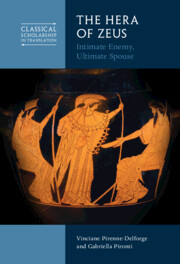Book contents
Bibliography
Published online by Cambridge University Press: 19 January 2022
Summary

- Type
- Chapter
- Information
- The Hera of ZeusIntimate Enemy, Ultimate Spouse, pp. 324 - 351Publisher: Cambridge University PressPrint publication year: 2022

